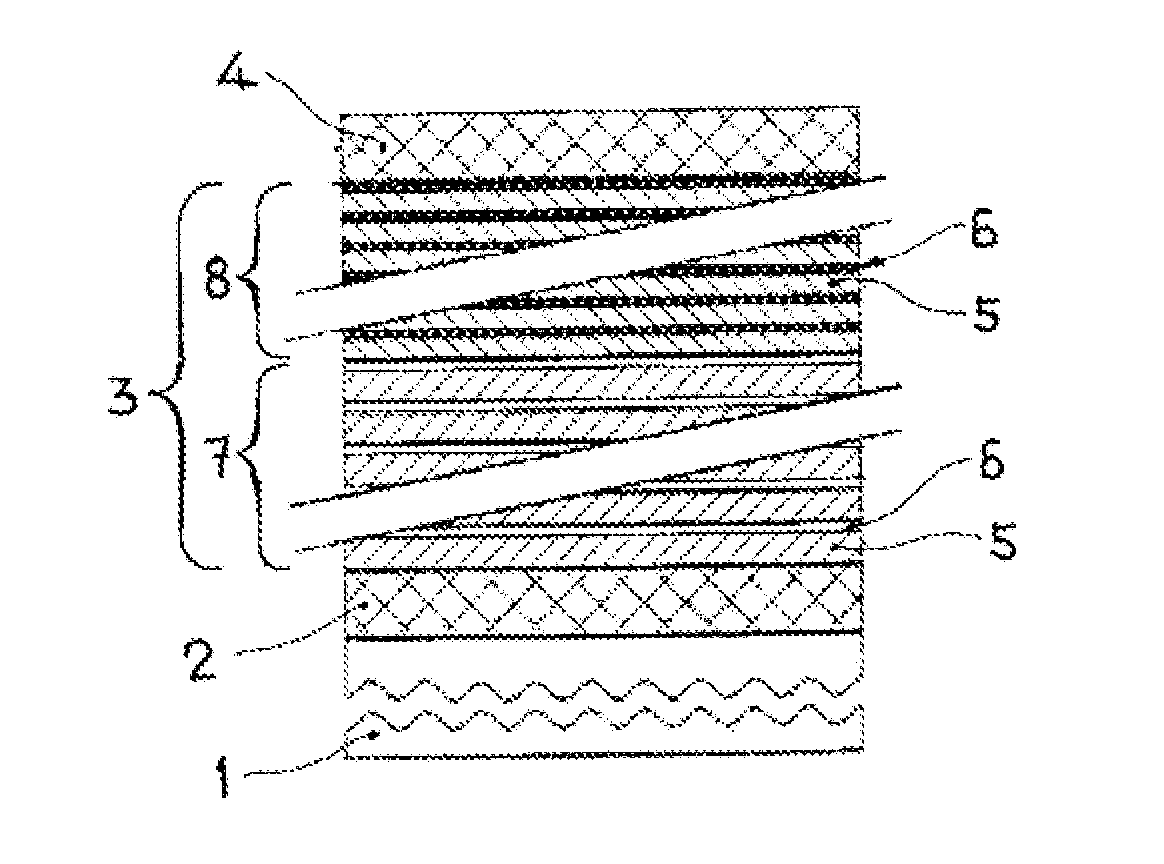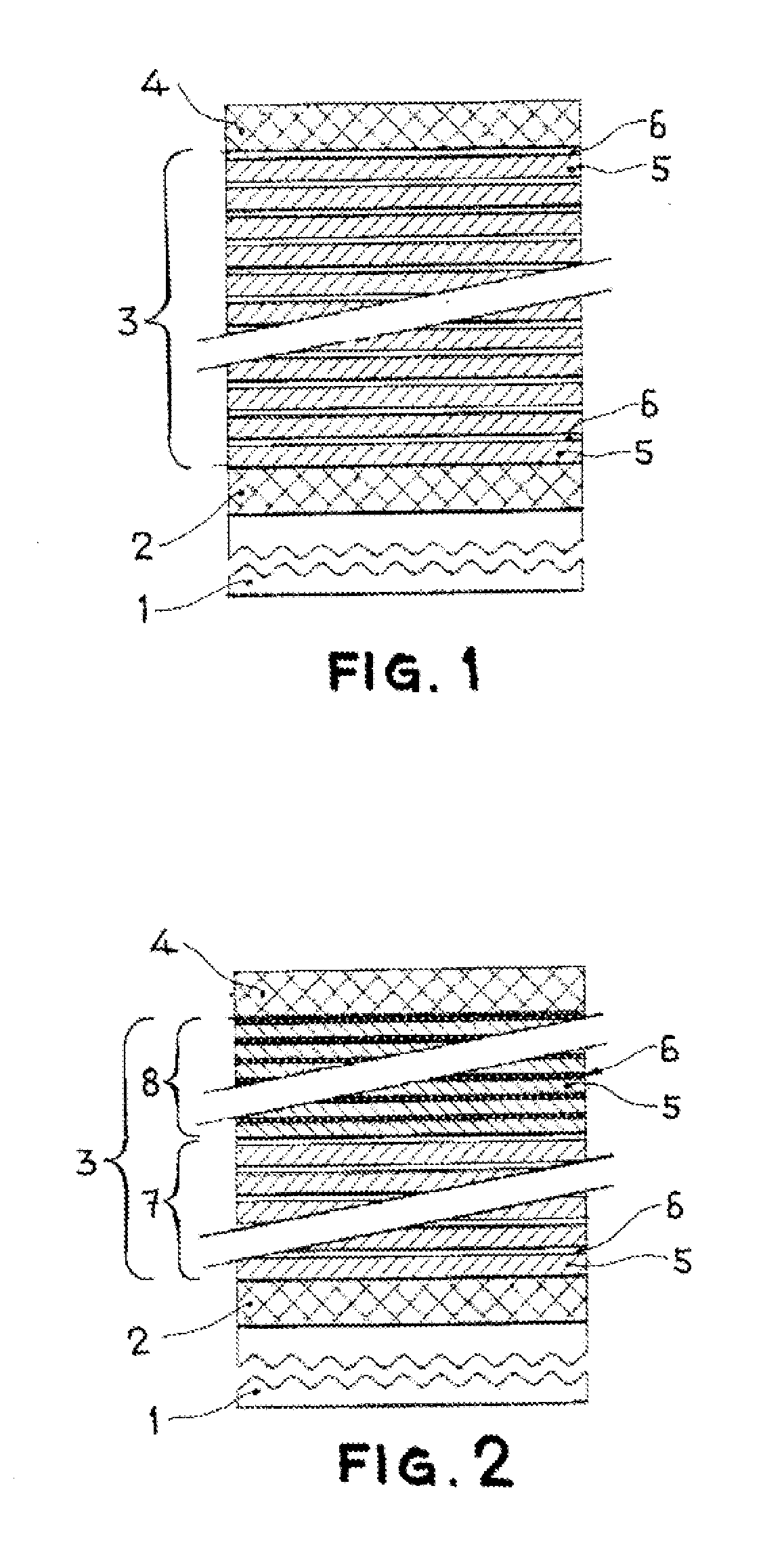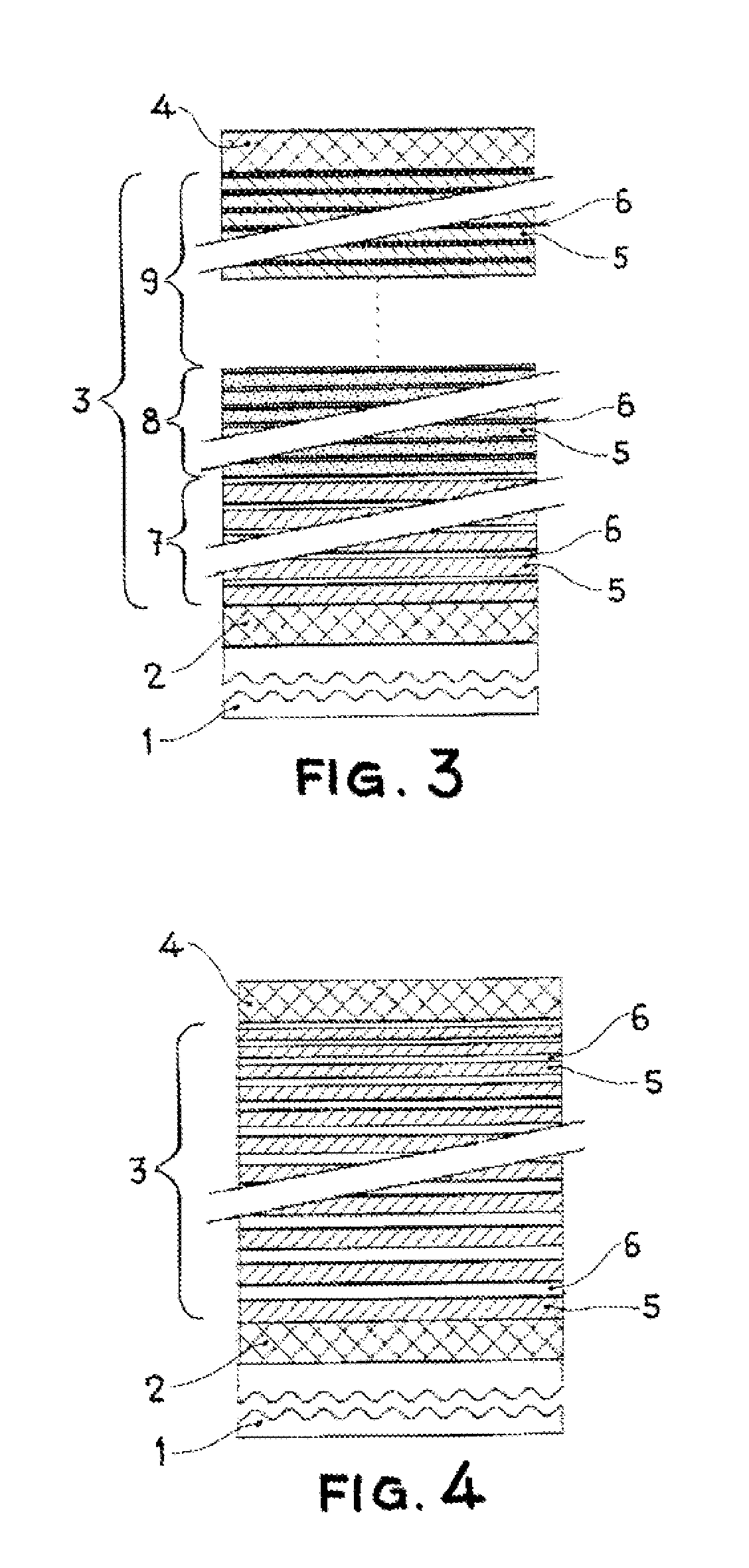Selective solar absorbent coating and manufacturing method
- Summary
- Abstract
- Description
- Claims
- Application Information
AI Technical Summary
Benefits of technology
Problems solved by technology
Method used
Image
Examples
example 1
Selective Absorbing Coating with Absorbent Structure of Two Zones Based on Molybdenum (Mo) and Aluminium Silicon Oxide (SiAIOx)
On a substrate (1) of stainless steel 304 a layer of Mo of 300 nm is deposited. On this layer of Mo the absorbent multilayer structure consisting in two differentiated zones is deposited. The first zone has a total thickness of 52 nm, and consists in 285 layers of SiAIOx with a thickness of 0.08 nm alternated with another 285 of Mo with a thickness of 0.1 nm. The second zone has a total thickness of 57 nm, and consists in 390 layers of SiAIOx with a thickness of 0.08 nm alternated with another 390 of Mo with a thickness of 0.06 nm. The thickness of each of these layers is understood to mean the average thickness obtained from the data provided by a quartz crystal microbalance. On the absorbent multilayer structure an antireflective reflective layer of SiAIOx with a thickness or 87 nm has been deposited.
With the aim of determining solar absorbance and thermal...
example 2
Selective Absorbing Coating with Absorbent Structure of Two Nickel (Ni) Based Zones a Silicon-Aluminium Oxide (SiAIOx)
On a substrate (1) or stainless steel 304 a layer of Ni of 110 nm is deposited. On this layer of Ni the absorbent multilayer structure consisting in two differentiated zones is deposited. The first zone has a total thickness of 78 nm and consists in 340 layers of SiAIOx with a thickness of 0.085 nm alternated with another 340 of Ni with a thickness of 0.145 nm. The second zone has a total thickness of 55 nm, and consists in 490 layers of SiAIOx with a thickness of 0.08 nm alternated with another 490 of Ni with a thickness of 0.03 nm. The thickness of each of these layers is understood to mean the average thickness obtained from the data provided by a crystal quartz microbalance. On the absorbent multi-layer structure is placed an antireflective layer of SiAIOx with a thickness of 67 nm.
With the aim of determining solar absorbance and thermal emissivity, a spectroscop...
PUM
| Property | Measurement | Unit |
|---|---|---|
| Temperature | aaaaa | aaaaa |
| Thickness | aaaaa | aaaaa |
| Thickness | aaaaa | aaaaa |
Abstract
Description
Claims
Application Information
 Login to View More
Login to View More - R&D Engineer
- R&D Manager
- IP Professional
- Industry Leading Data Capabilities
- Powerful AI technology
- Patent DNA Extraction
Browse by: Latest US Patents, China's latest patents, Technical Efficacy Thesaurus, Application Domain, Technology Topic, Popular Technical Reports.
© 2024 PatSnap. All rights reserved.Legal|Privacy policy|Modern Slavery Act Transparency Statement|Sitemap|About US| Contact US: help@patsnap.com










